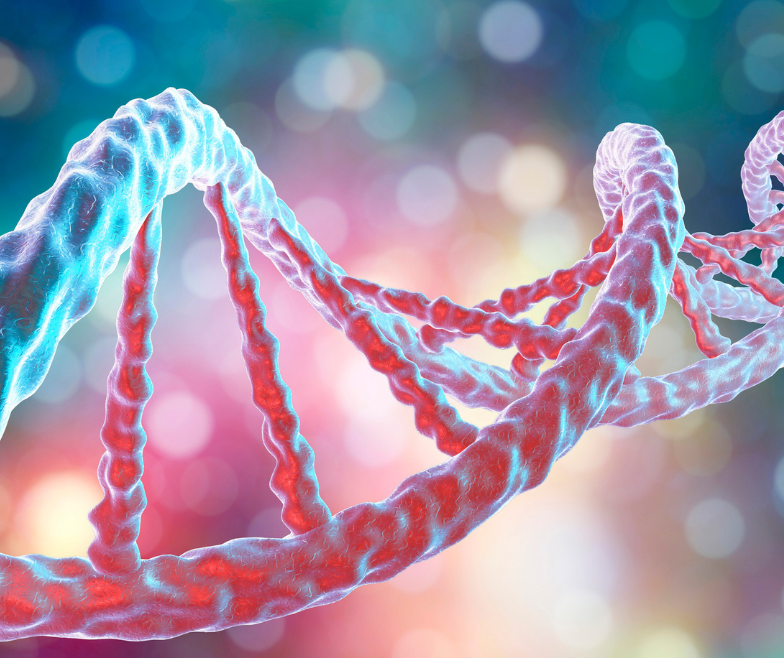How Common is Hereditary Breast Cancer?

Breast cancer is the most common type of cancer diagnosed in women in the U.S. with approximately 1 in 8 women developing it in their lifetime. In addition to lifestyle choices, such as diet, alcohol consumption and smoking, there are factors that are outside of our control that increase the risk of developing breast cancer, including genes. In fact, around 10% of breast cancers are linked to the inheritance of BRCA1 or BRCA2 genes.
According to the CDC, approximately 5-10% of breast cancers are hereditary, meaning that they are passed down from your family’s genes. If you have a family member who developed breast cancer at a young age or is closely related to you, such as your mother or sister, you may have an increased risk.
Risk Factors that Increase the Risk of Developing Breast Cancer
For women, there are a number of risk factors that play a role in developing breast cancer at a younger age. These risk factors include:
- Family history of breast or ovarian cancer
- Having a genetic defect (BRCA1 and BRCA2 mutation)
- Being exposed to radiation therapy in the breast or chest area during childhood or young adulthood
- Getting your period before age 12
If you do not possess any of these risk factors, you are assumed to have an average risk of developing breast cancer. However, if you are predisposed to breast cancer due to a genetic mutation, screening can begin at age 25. If a family member has been diagnosed with breast cancer, screening can begin 10 years earlier than the age that the family member was diagnosed.
BRCA Genes
BRCA genes (also called tumor suppressor genes) are genes that create proteins that repair damaged DNA. Men and women both have two copies of the BRCA1 and BRCA2 genes with one being passed down from each parent. These genes can produce pathogenic mutations that can lead to the development of breast cancer.
If you are someone who inherits a pathogenic mutation, you will have an increased risk of breast, ovarian and other types of cancer. Inherited harmful variations in BRCA1 and BRCA2 can cause cancer in younger people than in people who do not carry this mutation.
The National Cancer Institute states that 13% of women have a risk of developing breast cancer in their lifetime. However, if a pathogenic BRCA mutation is inherited, the risk significantly increases. If a pathogenic BRCA1 gene is inherited, the risk increases to 55-72% and if a BRCA2 gene is inherited, the risk increases to 45-69%.
You can undergo a simple blood test to better understand your risk of developing certain cancers due to genetic inheritance. Deciding if you want to get tested for BRCA1 and BRCA2 genetic mutations is a personal decision and that should be carefully considered.
Do More for Your Breast Health with a Breast Ultrasound Screening
Mammogram guidelines state that women should begin their routine mammograms beginning at age 40 which can lead many to think that before this age, they are too young to develop breast cancer. Breast cancer is also the leading type of cancer in women aged 15-39.
Aside from lifestyle changes that you can control to decrease your likelihood of developing breast cancer (exercise, eating healthy, refraining from smoking and alcohol use) you should also remain diligent and receive early mammogram and ultrasound screenings at age 40, or sooner than age 40 if you have known risk factors.
Taking into account, detecting breast cancer in its early stages significantly increases survival rates. In fact, 90% of women who detect stage I breast cancer have a 90% survival rate. Stage IV cancer, or metastatic breast cancer, where cancer has spread outside of the breast to lymph nodes, has the poorest prognosis.
This makes it all the more important to understand the medical history of your family in order to be proactive about your health. HerScan promotes good breast health and encourages all of our clients to participate in regular physician-guided exams, self-breast examinations and recommended annual mammograms, especially if you have dense breast tissue (which approximately 50% of women do).
On a mammogram, dense tissue appears white, while cancerous tumors also appear white, making it nearly impossible to "see" the tumor. It's like trying to find a snowball in a snowstorm. This is why ultrasounds are so critical for women with dense breast tissue. Adding a whole Breast Ultrasound screening to your breast health regimen can provide the earliest detection.
Do more for your health. Schedule a Breast Ultrasound Screening that increases early detection in women with dense breasts from approximately 48% to 97%. HerScan is a mobile breast screening service, meaning we travel all over the country to hundreds of different cities to hold our health events. Click here to schedule an appointment in your city today.
